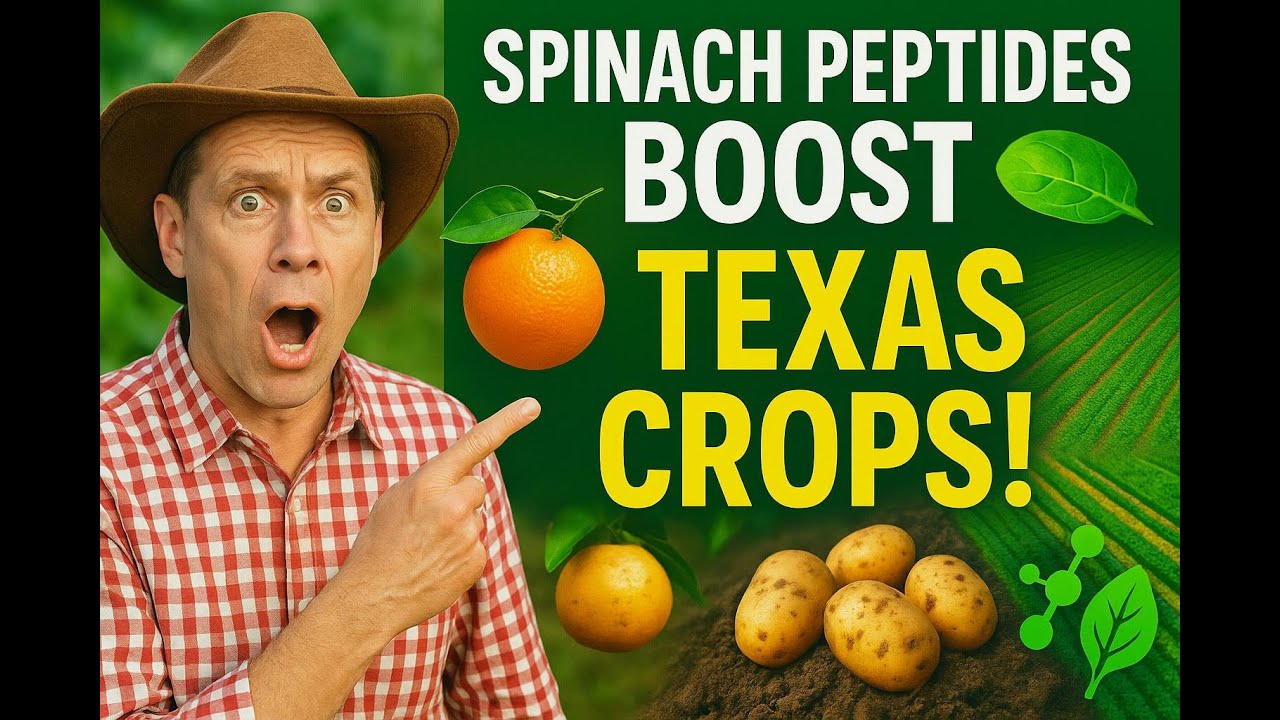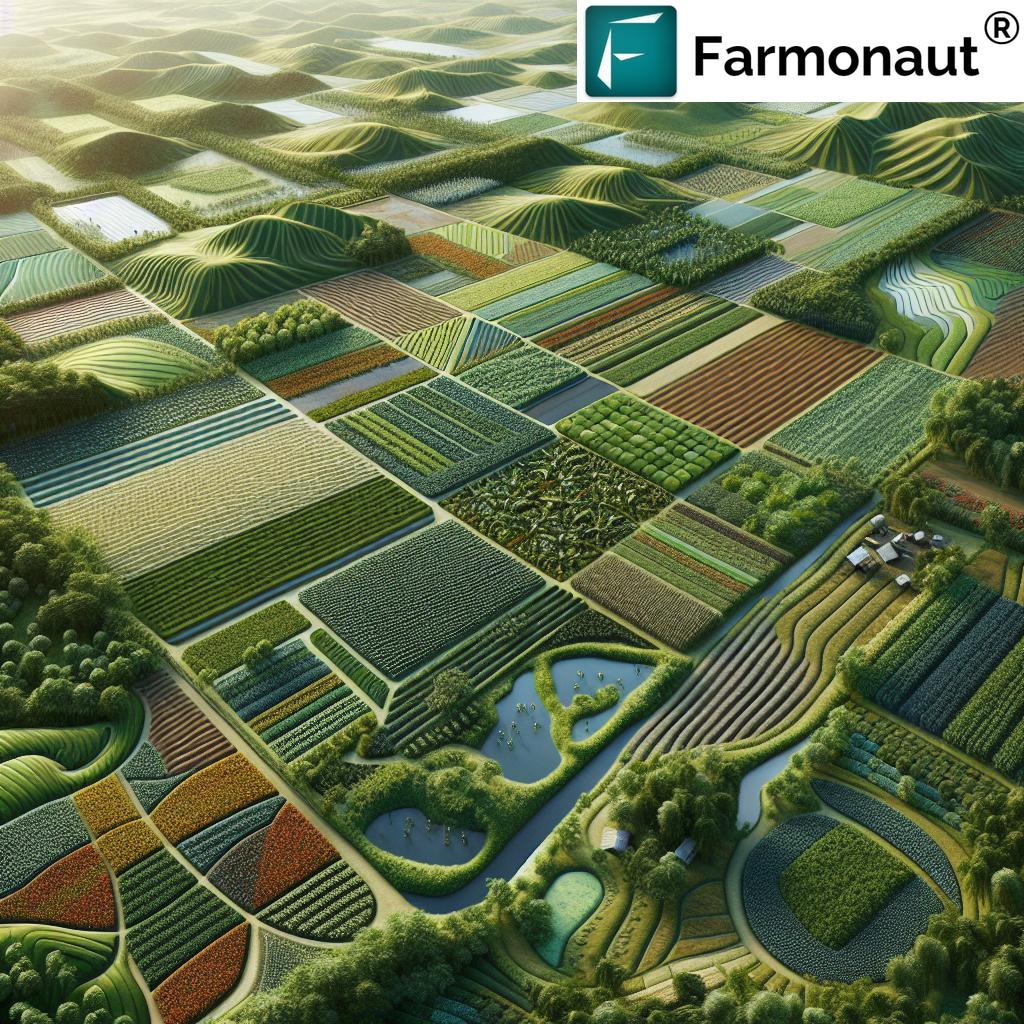Rats, Ants, Rat Holes & Irrigation in Garden: 7 Fixes for Sustainable Soil Health
“Rats can consume up to 20 grams of crops nightly, threatening garden yields if left unmanaged.”
- Introduction: Why Managing Rats, Ants, and Water Matters in 2026
- Understanding Garden Pests: Rats, Ants, and the Broken Balance
- Impact of Rat Holes in Garden: Threats to Root, Irrigation & Soil Structure
- Ants in the Garden: Roles, Benefits, and Risks
- Garden Irrigation: Modern Strategies for Efficient, Sustainable Water Use
- Wood Ash in Garden: Organic Soil Amendment for Healthier Crops
- Comparison Table of Sustainable Solutions: At-a-Glance Fixes
- 7 Step-by-Step Fixes to Address Rats, Ants, Rat Holes & Irrigation Issues
- Aerogarden Herb Garden: Urban Solutions for Year-Round Cultivation
- How Farmonaut Supports Smart, Data-Driven Agriculture
- Frequently Asked Questions
- Conclusion: Sustainable Pest & Soil Health Management for the Future
Introduction: Why Managing Rats, Ants, and Water Matters in 2026
In the continuously evolving landscape of modern agriculture and horticulture, sustainable garden management has become vital. By 2026 and beyond, for both rural farms and urban gardeners, the challenges posed by rats in garden, ants in garden, destructive rat holes in garden, and ever-demanding garden irrigation resonate more than ever. Coupled with the strategic use of wood ash in garden as an organic soil amendment, these issues define not only crop yields but also the broader environmental impact of our gardens and farms.
This guide presents 7 actionable fixes underpinned by science and sustainability. We examine how to control pests, protect soil health, optimize water availability, and integrate natural amendments—helping you address both immediate challenges and the longer-term need for resilient food production.
Related: See our crop plantation and forest advisory for satellite-driven crop management insights, boosting yields and sustainability on your farm.
Understanding Garden Pests: Rats, Ants, and the Broken Balance
Rats in garden and ants in garden are longstanding foes of healthy cultivation. But navigating effective pest management means more than elimination—it’s about understanding their roles, the conditions that foster them, and integrating solutions that produce a net benefit for the ecosystem.
Rats in Gardens: Persistent Threats to Food & Soil
Rats are resourceful rodents that thrive in dense vegetation and abundant food sources. Their burrowing nature results in rat holes in garden, damaging root systems, soil structure, and irrigation efficiency. In the contemporary context (especially as climate variances drive crop residues and waste), rats often proliferate where fields are poorly managed.
**Common signs of rats in the garden:**
- Fresh rat holes (small, round burrows near roots or irrigation lines)
- Gnaw marks on garden infrastructure, pipes, and crops
- Droppings, tracks, and telltale runs through dense vegetation
- Damp patches caused by irrigation disruption
**Why do they matter?**
- Crop loss: A single rat can eat over 20g of produce nightly (see trivia above).
- Substantial economic losses: Especially in small-scale farms, orchards, and nurseries
- Disease risk: Rats can transmit leptospirosis, salmonella, and other pathogens.
- Soil & infrastructure damage: Disruption of irrigation systems, weakening of soil structure, and collapsed garden beds.
Rats pose significant threats requiring a nuanced approach—one that integrates both traditional knowledge and innovative technologies.
Ants in Garden: Friend, Foe, or Both?
Ants occupy a more blurred line in the garden. They can be beneficial by aerating soil, facilitating organic matter decay, and controlling pest populations. However, certain ant species actively protect sap-sucking pests (aphids, mealybugs) leading to indirect crop harm.
- Ant colonies enhance soil porosity, improving water infiltration and root health.
- Some protect harmful insects, making pest challenges worse.
- Large nests may disrupt plant roots or attract other pests.
**Smart management** avoids eradication and instead supports ecological balance. With proper identification and targeted approaches, ant management becomes a tool for sustainability.
Learn More: Discover Farmonaut’s traceability systems for sustainable supply chains, improving transparency while tracking pest impact and farm inputs organically.
Impact of Rat Holes in Garden: Threats to Root, Irrigation & Soil Structure
Rat holes in garden are more than an inconvenience—they are signals of deep-rooted issues threatening yield, soil health, and the stability of irrigation and planting systems. Let’s examine the damage these burrows can do:
- Root Disruption: Burrowing destroys crops’ anchorage and nutrient uptake.
- Irrigation Leaks: Tunnel networks beneath pipes cause leaks, reducing water efficiency and increasing waste.
- Soil Erosion: Collapsed channels lead to surface runoff and soil structure loss.
- Infrastructure Threats: Rats often chew through pipes, cables, and plastic materials.
In modern agriculture (including hydroponic and soil-based gardens), such damage can cripple productivity. Addressing rat holes in garden must merge physical repair, habitat reduction, and population management.
More Insights: Interested in holistic crop health? Our carbon footprinting tools help you measure and manage the environmental impact of your agricultural practices, reducing input waste and enhancing long-term resilience.
Ants in the Garden: Roles, Benefits, and Risks
Approaching ants in garden with sensitivity means acknowledging their double-edged role. In the right balance, they’re allies; unchecked, they can disrupt plants and promote secondary pests.
Ecological Benefits of Ants:
- Soil Aeration: Improved drainage and water access, critical for most vegetable gardens.
- Nutrient Cycling: Enhancement of organic matter decomposition.
- Pest Predation: Many ants feed on insect larvae and eggs, reducing harmful populations.
Risks of Ant Populations:
- Supporting Pests: Most often seen with aphids or scale insects.
- Disrupting Soil Structure: Large colonies can undermine young roots.
- Crop Contamination: Risk of ant-infested fruits and vegetables.
Efficient Ant Management for Sustainable Practice
Integrated pest management (IPM) in 2026 emphasizes balances strategies:
- Monitor ant species carefully: Only target problematic, harmful populations.
- Employ targeted eco-friendly baits over generic pesticides.
- Reduce cover and food sources: Remove decaying organic matter, maintain tidy beds.
- Promote crop diversity: Breaks pest-ant mutualisms naturally.
- Introduce natural enemies: Encourage or introduce beneficial insects.
- Avoid heavy chemical use: This may disrupt beneficial ant activity.
In short, understand first—then act based on the ecological context.
Tip: Platform users managing larger sites can benefit from large scale farm management systems that consolidate pest monitoring, satellite advisories, and resource tracking for precise interventions.
Garden Irrigation: Modern Strategies for Efficient, Sustainable Water Use
Efficient garden irrigation is a central pillar for soil health, robust cultivation, and resilient crops—especially under changing climate conditions post-2025. Proper water availability prevents excessive drought stress, avoids waterlogging (which attracts pests), and supports balanced root activity and nutrient uptake.
Modern Irrigation Systems for Gardens
- Drip irrigation: Delivers water directly to root zones with minimal evaporation or runoff.
- Sub-surface systems: Increase water efficiency and decrease weed growth.
- Automated timers: Provide precise control and support water-saving targets.
- Rainwater harvesting setups: Integrate with storage tanks for a more sustainable supply.
Improving Soil Aeration Alongside Irrigation
- Manually use mechanical aerators to reduce soil compaction.
- Encourage earthworm and ant tunnels—natural aeration!
- Amend with coarse organic matter or biochar to boost soil porosity.
A well-designed irrigation system, paired with periodic soil aeration, reduces pest habitat and boosts garden resilience.
Pro Tip: For institutional or commercial gardens, smart fleet management can support maintenance of irrigation equipment, ensuring timely servicing and reducing costly water losses.
“Applying 250 grams of wood ash per square meter can increase soil potassium by 25% in sustainable gardens.”
Wood Ash in Garden: Organic Soil Amendment for Healthier Crops
Wood ash in garden is a time-honored, organic amendment—now validated in modern agronomy for both small gardens and large-scale agriculture. Wood ash is rich in:
- Potassium (for fruiting and flowering)
- Calcium (improves soil structure and offsets acidity)
- Trace minerals (boosting various plant metabolic processes)
Core Benefits:
- Raises soil pH (excellent for acidic soils)
- Boosts potassium for improved crop resilience and fruit quality
- Deters some pests (due to its alkaline effect)
- Enhances overall soil health and nutrient availability
Key Practices for Safe Application
- Only use plain, untreated wood ash (no charcoals with chemicals or plastic contaminants)
- Test soil pH before and after application
- Spread at 250g per m², lightly worked in (avoid direct contact with young roots)
- Limit use on alkaline or potash-rich soils
- Rotate with compost and green manures for balanced amendments
Risks & Cautions
- Excessive ash can create nutrient imbalances (notably, high calcium may tie up micronutrients)
- Potential for heavy metal accumulation over multiple years. Rotate with other organic amendments.
- Store ash in dry, covered containers for stability.
A precision approach is key—soil testing and careful rotation help sustain benefits while averting harm.
Comparison Table of Sustainable Solutions: At-a-Glance Fixes
| Problem | Sustainable Solution | Application Effort (Estimated) | Effectiveness (Estimated %) | Environmental Impact |
|---|---|---|---|---|
| Rat Control | Integrated Pest Management: Clean-up, barriers, targeted traps, minimal rodenticide | Medium | 85% | Low |
| Ant Management | Monitor species, targeted baits, encourage diversity, avoid broad pesticides | Low–Medium | 75% | Very Low |
| Rat Hole Repair | Collapse tunnels, refill soil, install physical mesh, rotate crops | Medium | 80% | Low |
| Irrigation Improvement | Drip/sub-surface systems, automated control, rainwater harvesting | Medium–High | 90% | Very Low |
| Wood Ash Application | Apply tested amounts, rotate with compost, avoid excessive application | Low | 80% | Moderate (if managed properly) |
7 Step-by-Step Fixes to Address Rats, Ants, Rat Holes & Irrigation Issues
1. Integrated Management of Rats in Garden
Step-by-step:
- Remove food sources: Clear all waste, residues, and fallen fruits promptly.
- Maintain tidy boundaries: Trim dense vegetation—eliminate rat shelters.
- Seal and repair structures: Use wire mesh and hardware cloth around planting beds and vulnerable infrastructure.
- Position bait stations: Place traps and bait stations strategically—avoid non-target areas.
- Rotate techniques: Don’t let rats adapt to one method—rotate cleaning, baiting, and barriers.
- Monitor: Check regularly for fresh holes, droppings, or gnaw marks.
2. Targeted Ant Management with Ecological Sensitivity
Step-by-step:
- Identify ant species: Use a magnifier or smartphone app to determine friend from foe.
- Apply eco-friendly bait: Choose sugar or protein baits for non-disruptive removal of harmful ant colonies.
- Promote garden biodiversity: Plant a variety of herbs, flowers, and vegetables to disrupt ant-pest relationships.
- Limit pesticide use: Avoid broad-spectrum insecticides, which may also hurt beneficial species.
- Encourage allies: Attract beetles and spiders—natural predators!
- Cleanup: Control sap-sucking insects that draw ants.
3. Repairing and Preventing Rat Holes in Garden
Step-by-step:
- Identify and collapse old tunnels: Use a shovel to gently close unused burrows.
- Refill and tamp soil: Use a soil-amendment mix to backfill holes, restoring structure.
- Lay physical barriers: Hardware cloth or metal mesh beneath beds stops re-burrowing.
- Rotate crops: Change plant types each season to disrupt rat patterns.
- Irrigate with care: Wet soils make tunneling harder for rodents.
4. Optimizing Garden Irrigation and Water Use
Step-by-step:
- Install drip watering: Place emitters directly at plant base for targeted hydration.
- Automate with timers: Use smart controls set for early morning or dusk.
- Harvest rainfall: Set up barrels/off-grid tanks for supplemental irrigation.
- Regularly inspect:** Prevent leaks and repair lines damaged by rodents instantly.
5. Soil Aeration for Healthy, Resilient Roots
Step-by-step:
- Use aerators: Manual spikes or plug-type aerators reduce compaction (essential for winter/spring prep).
- Promote natural tunnels: Sustain earthworm (and moderate ant) activity for aeration.
- Rotate organic matter: Add compost, biochar, or green manure between seasons.
6. Wood Ash Application for Soil Amendment
Step-by-step:
- Collect wood ash: Source from untreated, natural wood only.
- Test pH and potassium: Use soil test kits before applying for tailored amendment.
- Spread and mix: Broadcast evenly, rake in gently, and water lightly to avoid wind loss.
- Rotate and monitor: Avoid repeat application in same spot—rotate with compost for best results.
7. Integrated Monitoring with Satellite & Data Tools
Step-by-step:
- Monitor your garden with precision: Access real-time data on soil moisture, pest populations, and crop vigor using tools like the Farmonaut platform.
- Assess environmental impact: Use carbon footprinting for long-term sustainability metrics.
- Map changes and trends: Satellite imagery reveals pest hotspots, irrigation issues, and soil compaction areas for timely intervention.
Aerogarden Herb Garden: Urban Solutions for Year-Round Cultivation
In the 2026 era of controlled-environment farming, indoor aerogarden herb garden cultivation has gone mainstream. These hydroponic or aeroponic systems allow for:
- Efficient use of space—perfect for apartments and urban settings
- Year-round access to fresh herbs like basil, mint, and cilantro
- Pesticide-free, soil-less growth, favoring health and taste
- Automated, water-efficient systems with minimal input waste
**Installation tips:** Place in areas with good airflow and natural or artificial light. Rotate herbs regularly, clean system between cycles, and monitor for signs of algae or nutrient buildup.
Though limited by space, aerogardens demonstrate how modern urban agriculture can supplement traditional gardens, providing resilient platforms for growing safe, nutritious food.
How Farmonaut Supports Smart, Data-Driven Agriculture
As a satellite technology company, we at Farmonaut offer advanced, affordable, and scalable tools for pest management, crop monitoring, and resource optimization—empowering everyone from individual farmers and urban gardeners to institutional users and governments.
Key solutions include:
- Real-time monitoring: Satellite-based NDVI, soil moisture maps, and vegetation health index for quick detection of potential pest or irrigation issues.
- AI-driven advisory: Our Jeevn AI system provides location-specific, actionable guidance for sustainable practices.
- Blockchain traceability: Verify input application, track product journey, and comply with auditing requirements for safe, organic produce.
- Fleet and resource management: Optimize equipment and labor deployment to improve irrigation and pest control timeliness.
- Carbon footprinting: Track emissions, assess amendment efficacy, and position your garden or farm at the sustainability forefront.
All of these services are accessible through our Farmonaut App (available on Android and iOS), web portal, and flexible API integration. Developers, see our detailed API documentation for custom solutions.
Want affordable, scalable crop advisory and resource insights?
Frequently Asked Questions
What is the most effective sustainable method for rats in the garden?
Integrated Pest Management (IPM), combining clean-up, habitat modification, use of traps, and minimal rodenticide, remains the best sustainable method for controlling rats in gardens and agricultural spaces. Consistently monitor and adjust as needed for the best results.
Can ants actually improve soil health?
Yes—most ant activity enhances soil aeration, improves drainage, and accelerates organic matter breakdown. However, balance is critical since some species protect harmful pests and may disrupt root zones when heavily populated.
How do I know if I’m using too much wood ash in my garden?
Excessive wood ash can raise soil pH excessively and bind vital micronutrients. For most gardens, 250g/m² annually is safe; always test soil pH and potassium before repeat applications. Diversify with compost for balanced soil health.
What’s the best timing and method for garden irrigation?
Irrigate early morning or late evening to minimize evaporation. Use drip or sub-surface systems for direct root zone watering, adjusting frequency to reflect seasonal changes and rainfall.
How do satellite insights help my garden or small farm?
Satellites assess real-time crop health, track soil moisture, and alert you to pest or disease risk areas before problems escalate—making interventions more targeted and cost-effective.
Conclusion: Sustainable Pest & Soil Health Management for the Future
Addressing rats in garden, ants in garden, rat holes in garden, garden irrigation, and wood ash in garden holistically is more than a maintenance task in 2026—it is a cornerstone of modern sustainable agriculture and healthy urban cultivation. By combining traditional techniques with innovative technologies and careful amendments, we can protect soil, increase yields, and foster resilience against future challenges.
Integrated management—leveraging IPM, efficient garden irrigation, tested organic amendments, and real-time satellite tools—enables every grower to optimize plant health while maintaining environmental stewardship. Whether you’re on a sprawling agricultural field, a city rooftop, or anywhere in between, the practices outlined here are scalable, adaptable, and future-facing for the decade ahead.




















